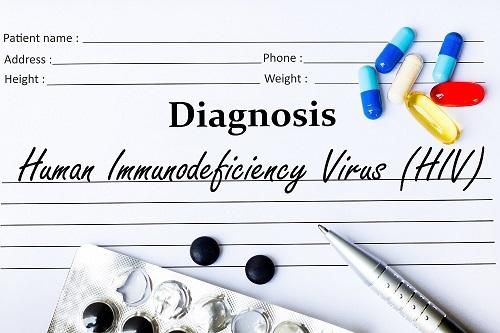Targeted HIV Screening Not Superior to Universal Testing in Emergency Departments
Three HIV screening strategies identified comparable numbers of new HIV diagnoses, a new study found.

Targeted HIV screening strategies in emergency departments were not superior to universal screening for identifying infections, according to a recent prospective clinical trial comparing HIV screening strategies at 4 urban hospitals.
The study, published in JAMA Network Open, included 76,561 patient visits at 4 hospitals from April 2014 to January 2016. Participants were in 3 groups – nontargeted HIV screening, enhanced targeted HIV screening and traditional targeted screening – to compare strategies for HIV screening in the emergency department.
“No screening approach—targeted (risk-based) or nontargeted (non-risk-based)—was found to be superior for identifying ED patients with HIV,” Jason S. Haukoos, MD, MSc, professor of emergency medicine and director of emergency medicine research at Denver Health Medical Center, told Contagion. “The three approaches we studied identified comparable numbers of newly diagnosed patients with nontargeted screening resulting in the most tests performed.”
Of the 25,469 participants randomized to the nontargeted group, 6744 (26.5%) completed testing and 10 (0.15%) were newly diagnosed. Of the 25,453 in the enhanced targeted group, 4,488 (32.3%) completed testing, and 7 (0.16%) were newly diagnosed. Of the 25,639 in the traditional targeted group, 3173 (44.7%) completed testing, and 7 (0.22%) were newly diagnosed.
Haukoos said he was surprised by “the relatively small number of new HIV diagnoses and that none of the arms of the study were identified as being superior to another.”
“We anticipated finding a much larger number of patients with HIV but didn’t, which may be related to intensive public health/prevention efforts nationally leading up to and during the performance of the trial,” he said.
The study was conducted in high-volume emergency departments in Baltimore, Maryland; Cincinnati, Ohio; Denver, Colorado; and Oakland, California. The median age of participants was 40, with 51.2% being women, 39.4% Black, 32.6% non-Hispanic White and 21.4% Hispanic.
In the nontargeted HIV screening arm, all patients were notified they would be screened for HIV unless they declined. The enhanced targeted HIV screening arm used the Denver HIV Risk Score, a quantitative risk prediction tool, to automatically calculate a score, which triggered a prompt to notify patients with high scores that they would be screened for HIV. Patients in the traditional targeted HIV screening arm answered conventional risk questions and a Behavioral Risk Screening Tool determined risk and the need for screening.
“Nontargeted HIV screening, also often referred to as ‘universal or ‘non-risk-based’ screening, results in larger number of patients tested for HIV and helps identify ED patients living with HIV,” Haukoos said. “This approach, as well, is likely the easiest to implement into routine ED care as risk questions aren’t required. Although not specifically studied in this trial, ongoing efforts to expand HIV screening in EDs remains a critical public health need.”
Targeted strategies required significantly fewer tests to yield a similar number of new HIV diagnoses to nontargeted screening, but all 3 screening strategies exceeded the 0.1% test prevalence threshold suggested by the CDC for routine screening.
More research is needed to examine the effects on operational efficiency, cost effectiveness, acceptance by patients and staff, and to determine the best approach for HIV screening.
“There are approximately 140 million ED visits each year in the US, most of which occur in community (i.e. non-academic) EDs where HIV screening is still not very common,” Haukoos said. “Beyond expansion of HIV screening efforts, identification of high-risk but negative HIV patients and referral to PrEP services and initiation of PrEP for those most at risk will likely be the next important step in HIV prevention from EDs. It is very common for patients at increased risk for HIV to only connect with healthcare via EDs, making EDs a sentinel clinical area to impact the HIV epidemic.”
HIV diagnostic testing dropped by 17.5% during the COVID-19 pandemic from March-October 2020, a recent study showed. Another recent study showed that incorporating universal HIV screening into COVID-19 testing at the University of Chicago Medicine emergency department maintained HIV screening volumes throughout the pandemic.
